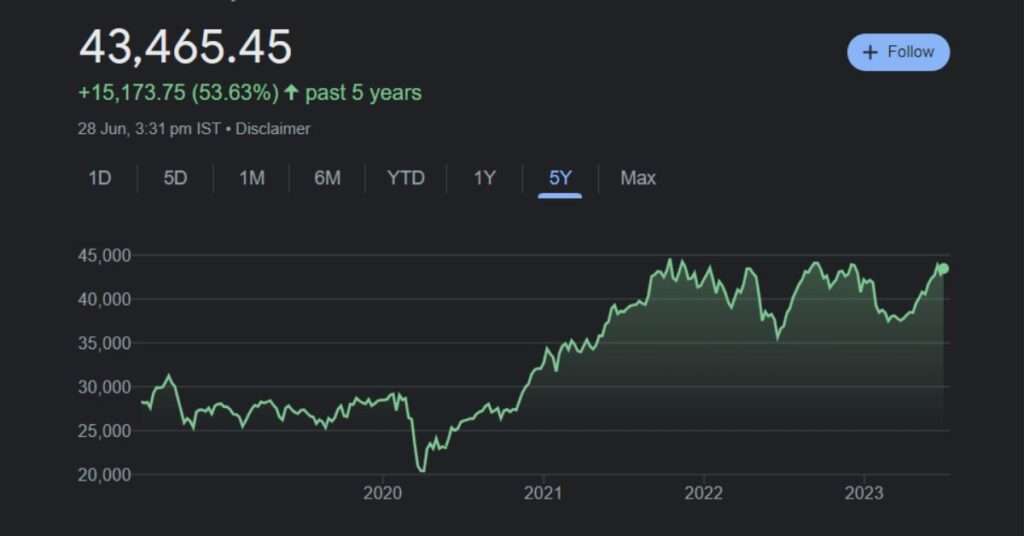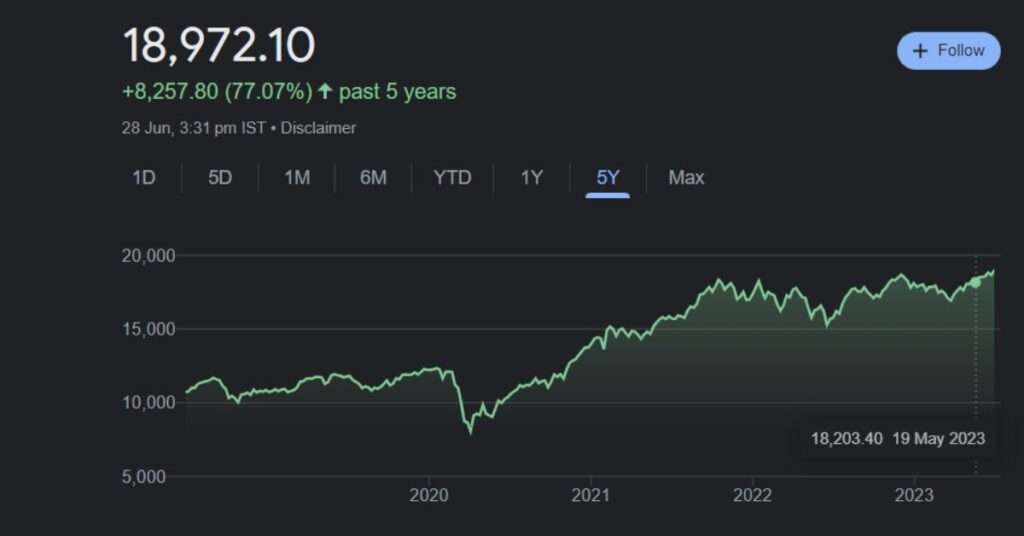Table of Contents

Nifty 50 vs Nifty Next 50: Understanding the Key Differences
Introduction
Understanding different market indices and how they impact your investment strategy is extremely important in the world of investing. In the Indian stock market, two prominent indices, Nifty 50 vs Nifty Next 50, play a significant role in shaping investment decisions, although they have some notable differences. In this article, we will explore the differences between Nifty 50 and Nifty Next 50, helping you make informed investment choices.
Understanding Nifty 50
Nifty 50, also known as the National Stock Exchange Fifty, is the flagship index of the National Stock Exchange of India. It comprises 50 large-cap stocks from various sectors and represents approximately 65% of the total market capitalization of the Indian equity market. Nifty 50 includes companies like Reliance Industries, HDFC Bank, Tata Consultancy Services, and many other prominent players in the Indian market.
Pros and Cons of Nifty 50
Pros:
- Represents well-established and stable companies.
- Lower risk and volatility compared to the Nifty Next 50.
- Widely recognized and used as a benchmark in the Indian stock market.
Cons:
- Limited exposure to mid-cap companies with potential for higher growth.
- May miss out on emerging opportunities outside the Nifty 50 stocks.
- Can be impacted by market concentration and sector-specific risks.
Understanding Nifty Next 50
Nifty Next 50, as the name suggests, represents the next set of 50 stocks below the Nifty 50 stocks in terms of market capitalization. It includes companies that have the potential to enter the Nifty 50 index in the future. Nifty Next 50 provides an opportunity to invest in promising mid-cap stocks with growth potential. Some notable constituents of Nifty Next 50 include SBI Life Insurance, Dabur India, Torrent Pharmaceuticals, and others.
Pros and Cons of Nifty Next 50
Pros:
- Provides exposure to mid-cap companies with growth potential.
- Opportunities for higher returns compared to the Nifty 50.
- Can capture emerging trends and industries.
Cons:
- Higher risk and volatility compared to the Nifty 50.
- Lower liquidity and trading volume.
- Companies included may have higher business and financial risks.
Key Differences between Nifty 50 and Nifty Next 50
- Performance Comparison
- Nifty 50 consists of well-established blue-chip companies with a proven track record. It tends to be more stable and less volatile compared to Nifty Next 50, which comprises mid-cap stocks that can experience higher price fluctuations.
- Nifty Next 50 has the potential for higher growth compared to Nifty 50 as it includes emerging companies with room for expansion.
- Market Capitalization
- Nifty 50 focuses on the top 50 companies by market capitalization, whereas Nifty Next 50 includes companies ranked from 51 to 100 in terms of market capitalization.
- Nifty 50 represents a larger portion of the overall market capitalization, while Nifty Next 50 covers a smaller segment but with growth potential.
- Sectoral Composition
- Nifty 50 aims to represent various sectors of the Indian economy, including banking, information technology, healthcare, energy, and more. It provides diversification across industries.
- Nifty Next 50 may have a higher concentration in specific sectors due to the nature of mid-cap stocks, which are often more focused on niche markets.
- Volatility and Risk
- Nifty 50 is generally considered less volatile and less risky compared to Nifty Next 50. The stability of blue-chip stocks makes Nifty 50 more suitable for conservative investors.
- Nifty Next 50 carries a higher level of volatility and risk due to the smaller size and growth potential of mid-cap stocks. It attracts investors seeking higher returns but with a higher risk appetite.
Investment Potential
Both Nifty 50 vs Nifty Next 50 offer unique investment potential, depending on your investment goals and risk tolerance. Nifty 50 is suitable for conservative investors looking for stable returns and long-term capital appreciation. It provides exposure to industry leaders with a proven track record.
On the other hand, Nifty Next 50 presents an opportunity to invest in mid-cap stocks with higher growth potential. These companies are poised for expansion and can generate substantial returns in favorable market conditions. However, it’s important to note that Nifty Next 50 can be more volatile and may require a higher risk appetite.
Should I Invest in Nifty Next 50?

Deciding whether to invest in Nifty 50 vs Nifty Next 50 depends on your investment objectives and risk profile. If you are an aggressive investor with a higher risk appetite, investing in Nifty Next 50 can be a viable option. It provides exposure to mid-cap stocks with growth potential and the possibility of generating significant returns.
However, if you prefer stability and are more risk-averse, Nifty 50 might be a better choice. It consists of well-established companies with a proven track record and lower volatility.
Is Nifty 50 a Good Investment?

Between Nifty 50 vs Nifty next 50, Nifty 50 has historically been considered a good investment option for long-term investors. It includes leading companies with strong fundamentals and a substantial market presence. Nifty 50 offers stability, diversification, and the potential for consistent returns over the long run. However, individual investment decisions should be based on thorough research, risk assessment, and alignment with personal financial goals.
Impact of Economic factors (Nifty 50 vs Nifty next 50)
The Nifty 50 and Nifty Next 50, like any other stock market indices, are influenced by various economic factors that can impact their performance. Understanding the impact of these economic factors is crucial for investors looking to make informed decisions. Here are some key economic factors that can affect the Nifty 50 vs Nifty Next 50:
- GDP Growth: The overall economic growth of a country, as measured by the Gross Domestic Product (GDP), can have a significant impact on both indices. During periods of robust GDP growth, companies listed in the Nifty 50 vs Nifty Next 50 tend to perform well as consumer demand increases, leading to higher revenues and profitability.
- Interest Rates: Changes in interest rates set by the central bank can affect borrowing costs for companies. Lower interest rates can stimulate economic growth, making it easier for businesses to access capital for expansion. This can positively impact both the Nifty 50 and Nifty Next 50 as companies benefit from lower borrowing costs.
- Inflation: Inflation, the rate at which prices of goods and services rise, can influence the performance of the indices. High inflation erodes purchasing power and can negatively affect consumer spending. Companies in sectors such as consumer goods and retail may experience reduced demand, impacting their financial performance and, in turn, the indices.
- Government Policies: Government policies, such as tax reforms, fiscal stimulus, or regulatory changes, can significantly impact the stock market. For example, policy initiatives that promote infrastructure development or ease of doing business can benefit companies in the Nifty 50 and Nifty Next 50, leading to positive market sentiment.
- Global Economic Conditions: The global economic environment plays a vital role in the performance of stock market indices, including the Nifty 50 vs Nifty Next 50. Factors such as geopolitical tensions, trade policies, and global market trends can impact investor sentiment and, subsequently, the performance of the indices.
- Currency Fluctuations: Currency movements can affect companies involved in international trade. The Nifty 50 and Nifty Next 50 include companies with significant export or import exposure. Currency appreciation can boost revenues for exporting companies, while depreciation can increase costs for importers, affecting their profitability and, in turn, the indices.
- Commodity Prices: For sectors directly linked to commodities, such as energy or metals, fluctuations in commodity prices can have a significant impact. Companies in these sectors may experience changes in revenues and profitability based on commodity price movements, which can influence the indices’ performance.
Strategies for Investing in Nifty 50 vs Nifty Next 50
- Diversification: Consider including both Nifty 50 and Nifty Next 50 in your investment portfolio to balance stability and growth potential.
- Asset Allocation: Determine the proportion of your portfolio to allocate to Nifty 50 and Nifty Next 50 based on your risk tolerance and investment objectives.
- Regular Monitoring: Keep track of the performance of the indices and periodically rebalance your portfolio to maintain the desired asset allocation.
Conclusion (Nifty 50 vs Nifty next 50)
In summary, Nifty 50 vs Nifty Next 50 offer distinct investment opportunities. Nifty 50 provides stability and exposure to established companies, while Nifty Next 50 offers growth potential and access to mid-cap stocks. Your investment decision should be based on careful analysis of your risk tolerance, investment goals, and market conditions.
FAQs
FAQ 1: What is the difference between Nifty 50 vs Nifty Next 50?
Nifty 50 consists of the top 50 companies by market capitalization, while Nifty Next 50 includes the next 50 companies in terms of market capitalization, representing mid-cap stocks with growth potential.
FAQ 2: Is Nifty 50 more stable than Nifty Next 50?
Yes, Nifty 50 is generally considered more stable and less volatile compared to Nifty Next 50. Nifty 50 comprises well-established blue-chip companies, whereas Nifty Next 50 includes mid-cap stocks that can be more volatile.
FAQ 3: How can I invest in Nifty Next 50?
You can invest in Nifty Next 50 through various investment vehicles such as index funds, exchange-traded funds (ETFs), and mutual funds that track the performance of the Nifty Next 50 index.
FAQ 4: Should I consider both Nifty 50 and Nifty Next 50 for my investment portfolio?
Including both Nifty 50 and Nifty Next 50 in your investment portfolio can provide diversification and a balance between stability and growth potential. However, the decision depends on your risk tolerance and investment goals.
FAQ 5: Are Nifty 50 and Nifty Next 50 suitable for long-term investments?
Yes, both Nifty 50 and Nifty Next 50 can be suitable for long-term investments. Nifty 50 offers stability and steady growth, while Nifty Next 50 provides the potential for higher returns in the long run, albeit with higher volatility. It’s essential to align your investment choices with your long-term financial goals.